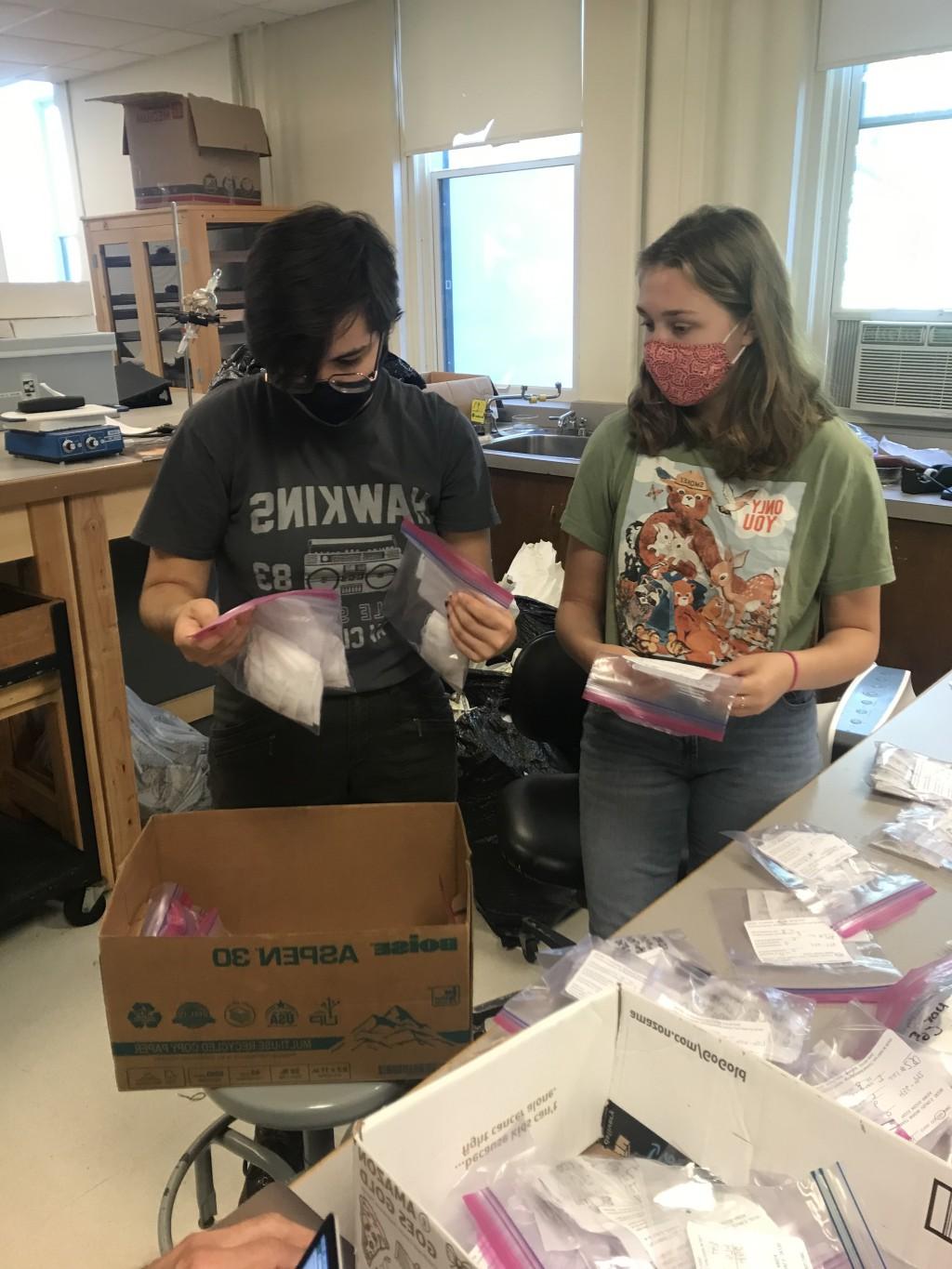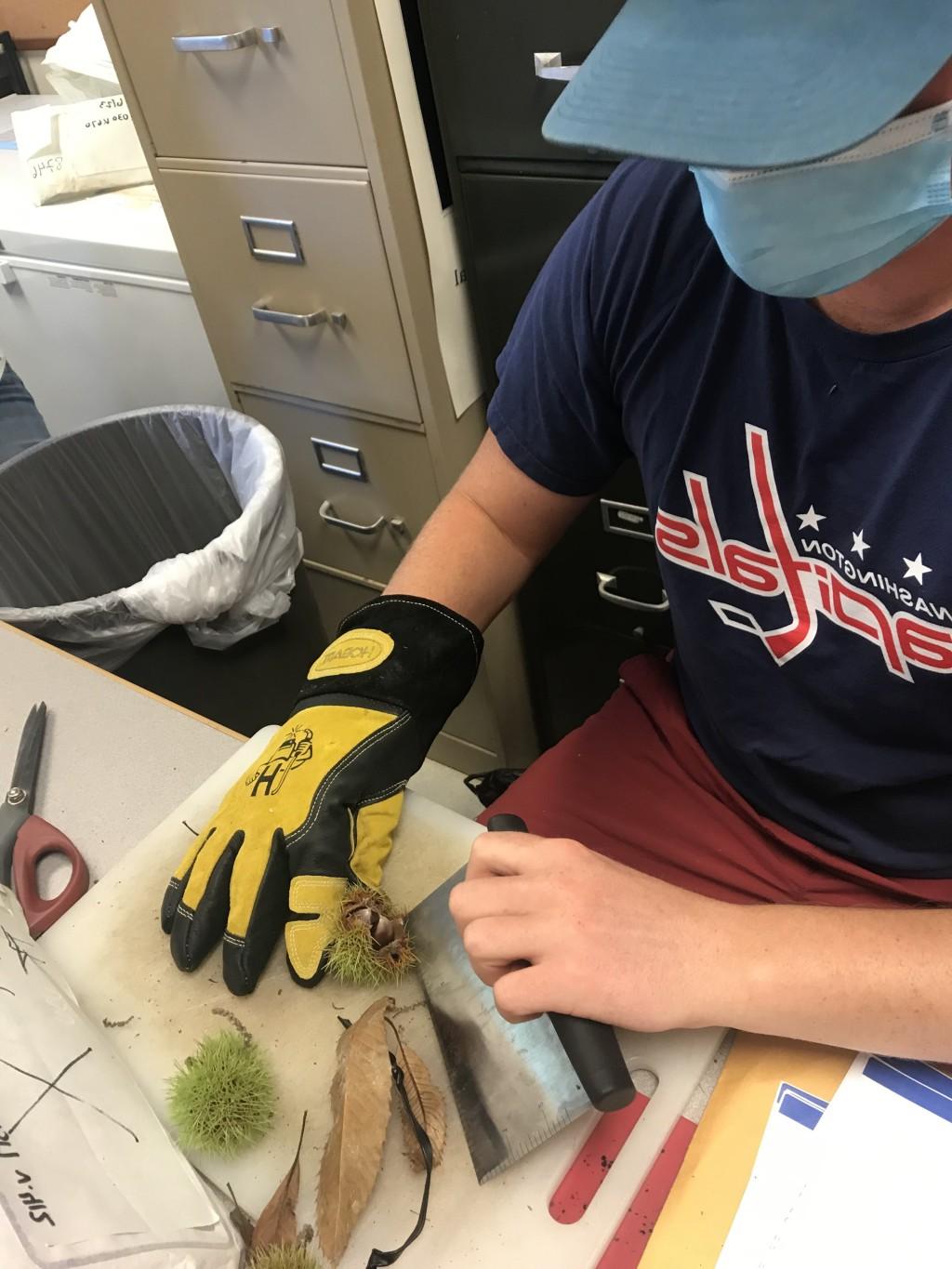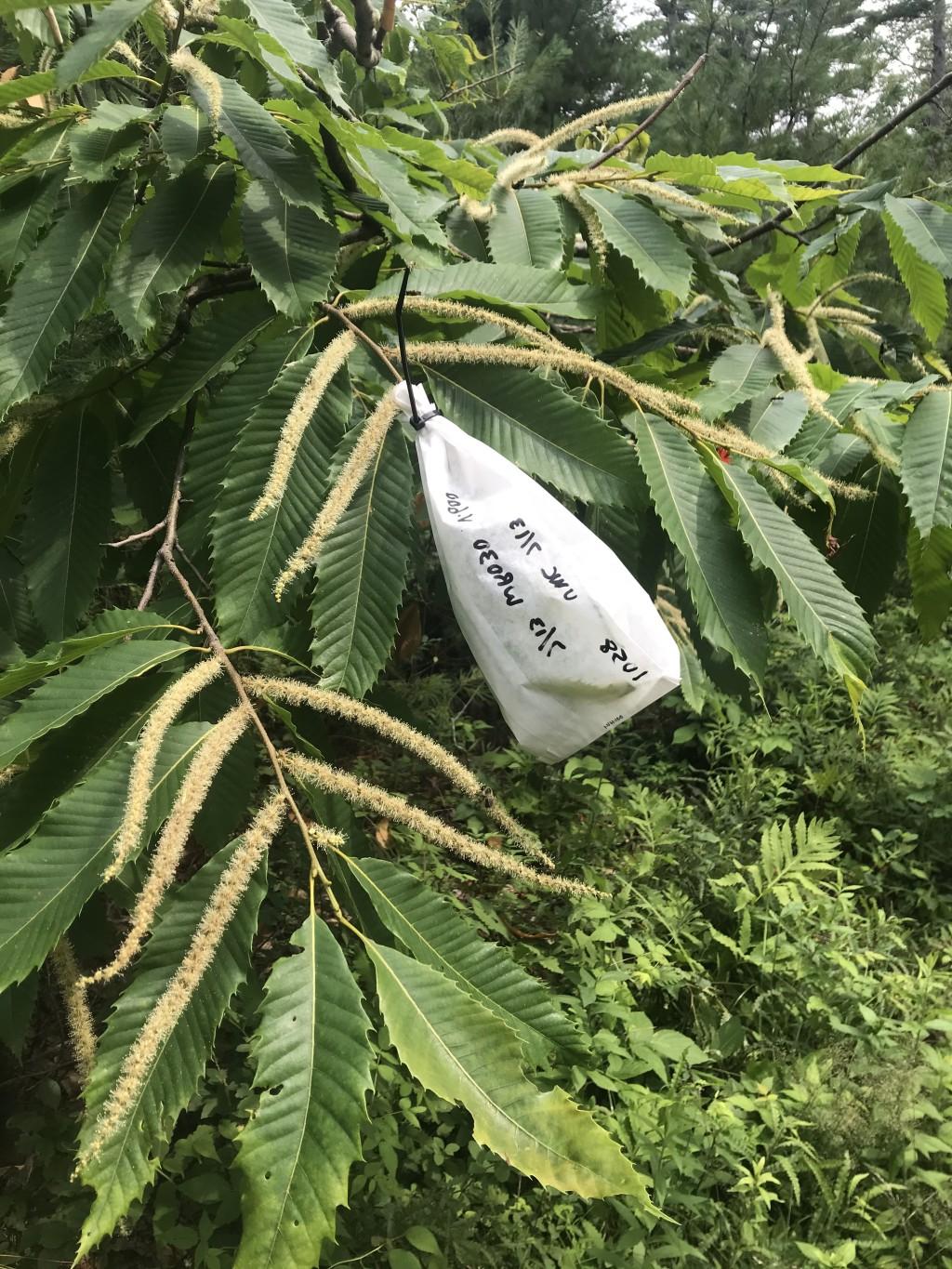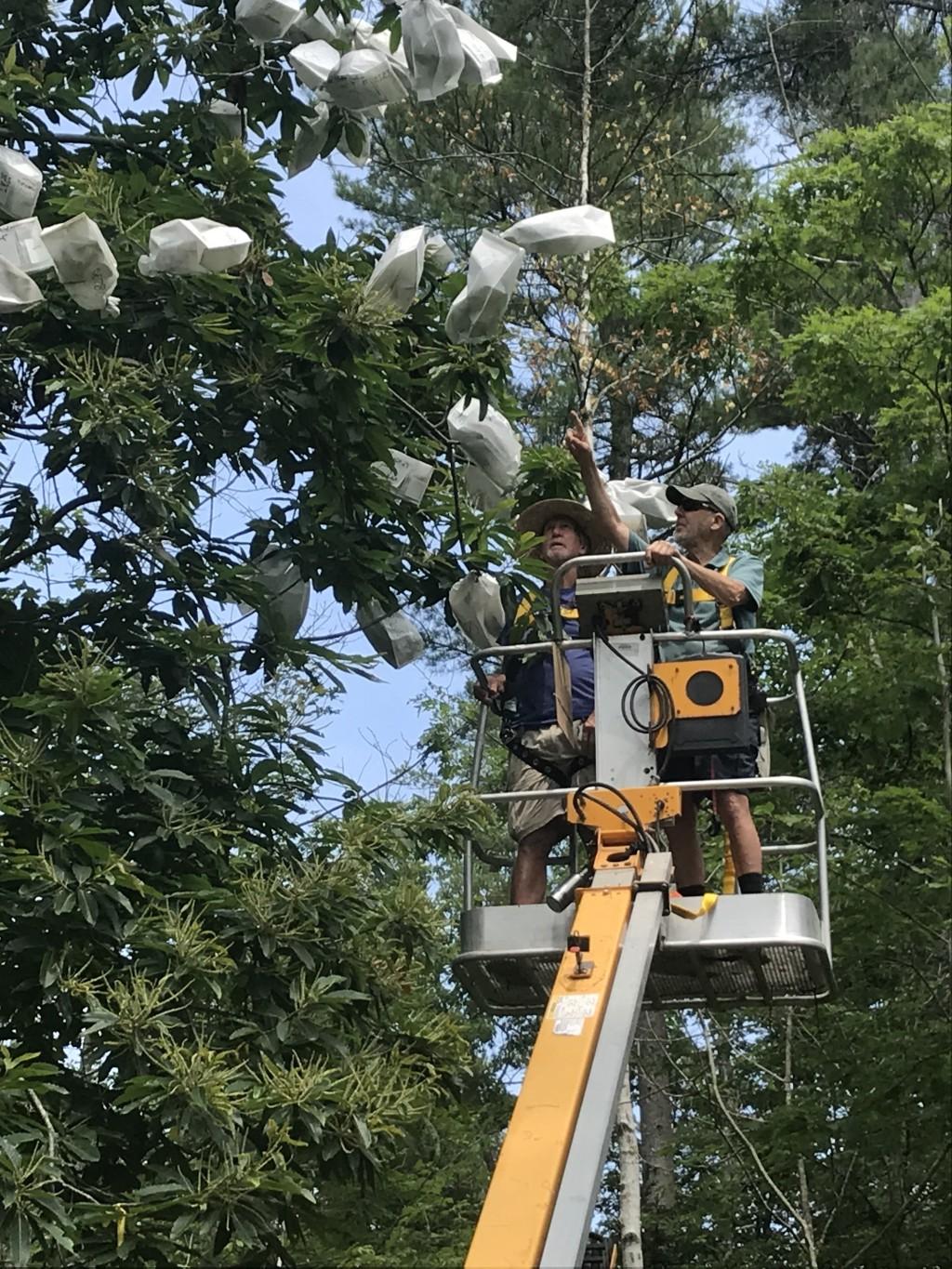学生 become integral part of American chestnut tree restoration project
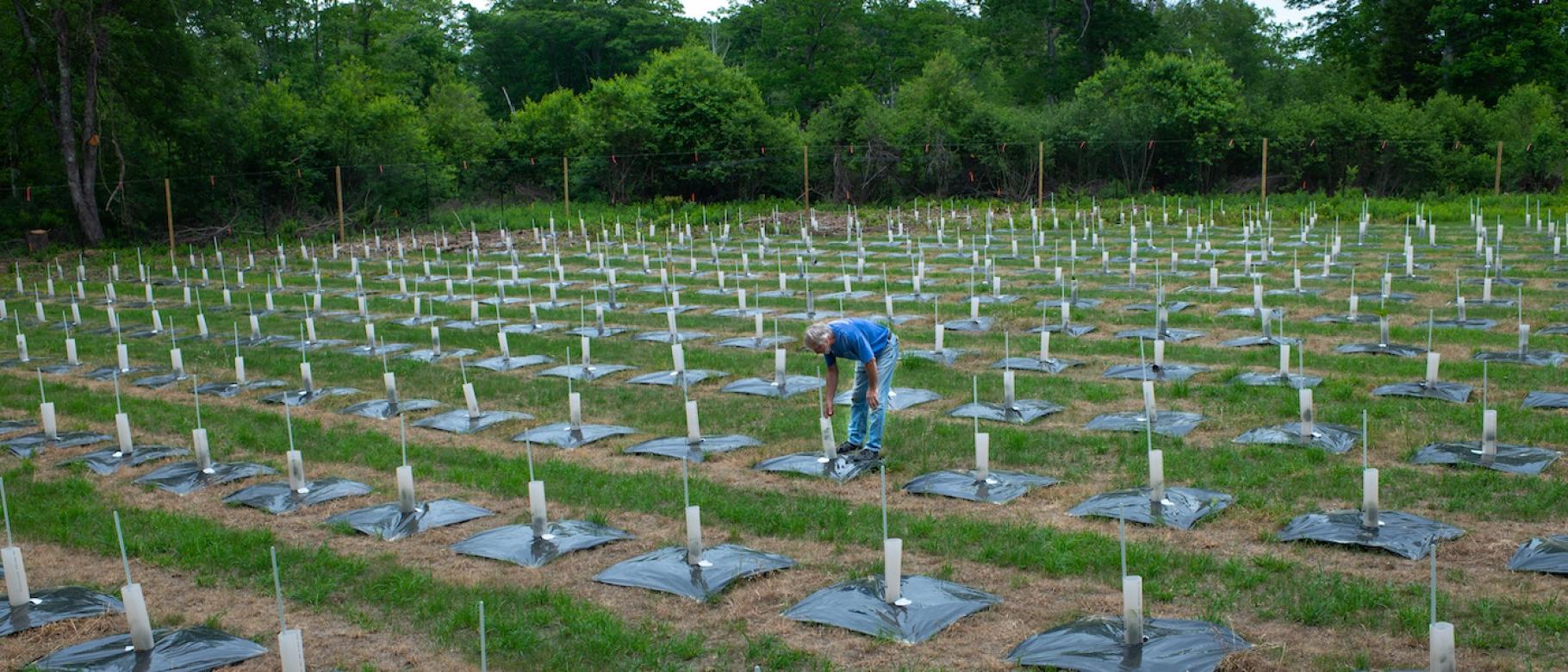
The University of New England prides itself on providing real-life, 为学生提供实践学习经验. A project aimed at restoring the American chestnut tree is a prime example of that.
“So many people in my generation want to do something to help the environment because we keep hearing that 地球正在消亡, 地球正在消亡,弗吉尼亚·梅(环境科学)说, ’24). “采取集体行动是我们的责任, 集体行动就是做这样的研究. The fact that we can bring back even a part of the natural biodiversity of New England is incredible.”
曾被誉为“东方的红杉”,” the American chestnut was all but destroyed during the last century by an accidentally imported fungal blight that is still killing the few remaining trees today. The blight has wiped out an estimated four billion chestnuts.
几年前,汤姆·克拉克博士.D., professor in the Department of Environmental Studies, embarked on a mission to foster the comeback of the American chestnut tree. Now, his students are an integral part of the project.
梅说:“这让我非常充实。. “One of the reasons that I really wanted to come to UNE was because I knew there was a lot of undergrad research being done. This is an amazing project, and I really wanted to be in on it.”
在这个夏天之前, 凯特·甘利(环境科学), ’24) did not know much about the American chestnut tree.
“I did some research on my own to gather the history of it, and I had never even realized that the American chestnut was such a keystone species in our ecosystem on the East Coast,她解释道.
我们最近采访了甘利, 五月, and two other students in Klak’s lab where they were shucking burrs and removing their transgenically-pollinated chestnuts, 然后记录数据.
“It is definitely a very different experience than what you would consider a normal type of classroom setting,甘利评论道. “We do not work out of a textbook; instead we work as an interactive team and less of a class. Today we are labeling all of our chestnuts and processing that data to analyze later. 几周前, we were out in Cape Elizabeth harvesting the chestnuts and monitoring our blight-tolerant seedlings.”
Klak collaborates with a team of scientists who created the fungal blight-tolerant chestnut seedlings by inserting a gene from wheat into them. The wheat gene protects the plant from fungal blight. UNE is the only place in New England and one of the few places in the country that has the seedlings. 通过激烈的, speed breeding conditions in the greenhouse and lab at the Harold Alfond Center for 健康 科学s, Klak and his students got the seedlings to produce pollen in about a third of the time they would typically take to produce it outdoors. The pollen was then put on the female flowers of American chestnut trees in Cape Elizabeth.
到目前为止, the experiment appears to be working because the pollen has helped those trees produce fertile chestnuts. Those chestnuts now contain all of the genes of the wild trees being killed by the fungal blight and the blight tolerant wheat gene.
“We will grow those chestnuts up as big as we can in the UNE greenhouse, 然后我们把它们种在地里,克拉克说。. “根据我们目前所知道的所有科学, we think that the ones that have the wheat gene will be protected. So, this is our New England field experiment to see whether we got our lab science right.”
Klak is excited seeing his students so energized by this project.
“It is an exhilarating thing to be able to make a difference in the world in terms of the environmental impacts,克拉克说。. “我们有时会感到不知所措, but here is a project where we can literally feel day by day that we are moving in the right direction to turn around some of the ecological damage that's been happening.”
他最近告诉 班戈日报 that if the experiment helps restore the mighty chestnut to American forests, it would be “the biggest ecological turnaround in North American history.”
The students are hoping the project will become a legacy that they can leave behind for future generations. It is definitely a project they will continue to follow no matter what paths their lives may take.
“I will always want to follow what is happening with the American chestnut tree because now that I know it's a keystone species, I think it is important that we keep tabs on such a key member of our ecosystem,甘利说.
